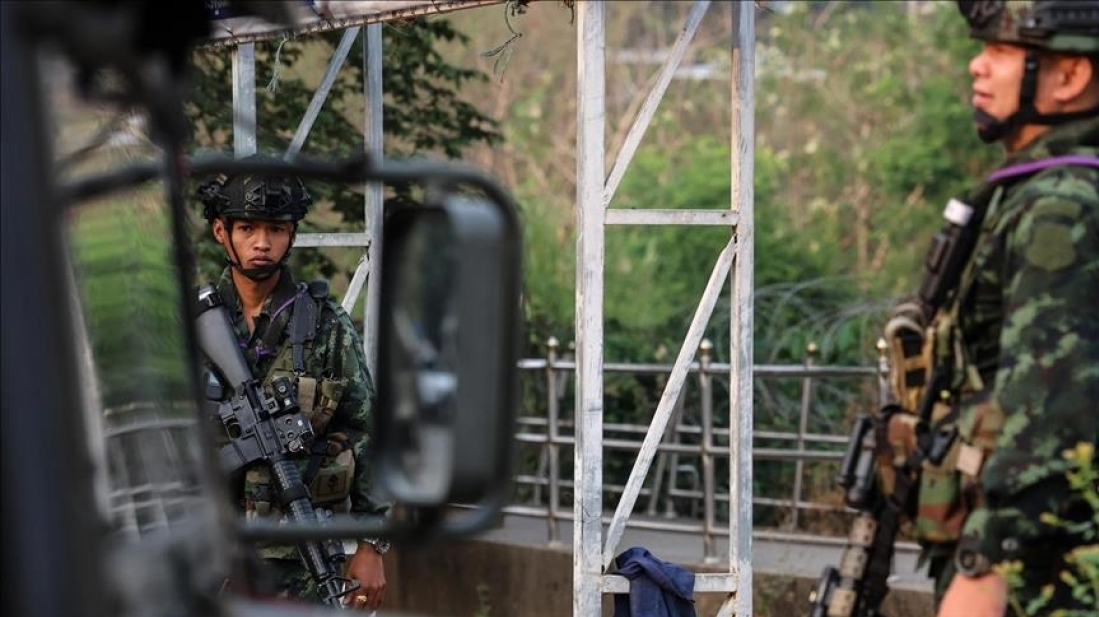Trump eyes expanded partnership in Central Asia with G20 invitation
U.S. President Donald Trump has invited the leaders of Kazakhstan and Uzbekistan to attend the G20 summit set to be hosted in Miami next year....

Cambodian and Thai forces clashed along their disputed border on Thursday, with Thailand deploying F-16 fighter jets and Cambodia firing rockets, killing at least 12 people and injuring 17, according to Thai authorities. The escalation was triggered by landmines laid along the border.
The two neighbours contest parts of the border stretching across Cambodia’s Preah Vihear province and Thailand’s northeastern Ubon Ratchathani province.
Tensions have been rising since 28 May, when a Cambodian soldier was killed in what was described as cross-border fire.
Cambodia’s claim is based on a 1907 map created during French colonial rule under the Franco-Siamese treaty, which placed areas such as the Preah Vihear Temple under Cambodian control, according to Modern Diplomacy.
Thailand has long contested this, arguing the map was unilaterally drawn by French officials without Thai consent and deviated from natural watershed boundaries, creating conflicting interpretations.
Efforts to resolve the issue diplomatically failed.
The International Court of Justice (ICJ) ruled in 1962 that the Preah Vihear Temple belonged to Cambodia, but other parts of the border remained undefined, keeping tensions alive.
A further ICJ ruling in 2013 confirmed Cambodia’s sovereignty over the surrounding promontory but left adjacent disputed areas unsettled.
The dispute turned violent in 2008, shortly after the Preah Vihear Temple was listed as a UNESCO World Heritage site, which Thailand opposed.
Both sides accused each other of starting the fighting.
The most deadly clashes were in 2011, killing at least 15 people and displacing tens of thousands.
Fighting centred on jungle border areas dotted with ancient temples claimed by both sides.
A cease-fire was declared after seven days, but sporadic skirmishes continued as the border remains undemarcated.
Cambodia remains one of the world’s most heavily mined countries, with an estimated 4–6 million landmines and unexploded ordnance (UXO) left from decades of conflict, including the Khmer Rouge era and the Vietnam War, according to APOPO.
The high density of mines has made border regions dangerous, contributing to one of the highest amputee rates per capita globally.
Demining efforts by organizations such as The HALO Trust and the Cambodian Mine Action Centre (CMAC) have cleared over 500 million square metres of land, but vast areas remain contaminated, increasing the risk of accidental cross-border incidents.
In 1962, the International Court of Justice (ICJ) ruled that the Preah Vihear Temple belongs to Cambodia. However, the decision did not fully settle the dispute as the surrounding areas remained undefined.
In 2011, the United Nations ordered both sides to withdraw their forces and establish a demilitarized zone around the disputed area.
However, the UN did not decide who would control the larger territories where clashes continued to occur.
In November 2013, the ICJ confirmed Cambodia’s sovereignty over the entire Preah Vihear temple complex and ruled that Thailand was obligated to withdraw its military personnel from the area.
Despite this, tensions have persisted due to unresolved claims over other border regions.
Vince Zampella, co-creator of the Call of Duty gaming franchise, has died in a car crash involving a Ferrari crash on Monday in Los Angeles, United States.
Israeli Prime Minister Benjamin Netanyahu said Israel is monitoring recent Iranian military exercises and will raise the issue with U.S. President Donald Trump during his visit to Washington next week.
Paramount has reaffirmed its bid to acquire Warner Bros. Discovery, offering $30 per share in cash and backing the proposal with a $40.4 billion personal equity guarantee from billionaire Larry Ellison, despite the target company’s board urging shareholders to reject the offer.
U.S. President Donald Trump has approved plans to construct a new class of battleships, which he described as larger, faster and significantly more powerful than any previous U.S. warship.
As the European Commission warns of possible visa suspension, Georgian authorities reject accusations of democratic backsliding. What is really at stake — and who could be affected most?
France’s government is moving to pass emergency legislation to keep the state operating into January after lawmakers failed to agree on a 2026 budget, as pressure grows from investors and credit ratings agencies.
Australia’s most populous state has passed sweeping new gun control and anti-terror laws following a mass shooting at Bondi Beach, tightening firearm ownership rules, banning the public display of terrorist symbols and expanding police powers to restrict protests.
Thailand and Cambodia both reported fresh clashes on Wednesday, as the two sides prepared to hold military talks aimed at easing tensions along their shared border.
Start your day informed with AnewZ Morning Brief: here are the top news stories for the 24th of December, covering the latest developments you need to know.
The United States will impose and enforce sanctions "to the maximum extent" to deprive Venezuelan President Nicolas Maduro of resources as Russia warned other Latin American countries could be next, the U.S. told the United Nations on Tuesday.
You can download the AnewZ application from Play Store and the App Store.

What is your opinion on this topic?
Leave the first comment